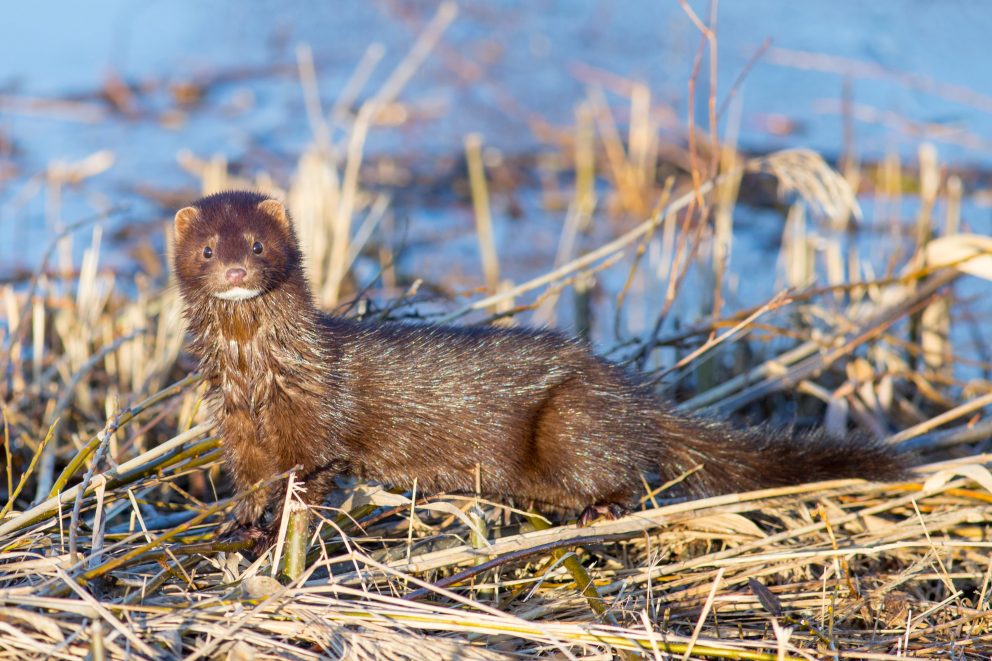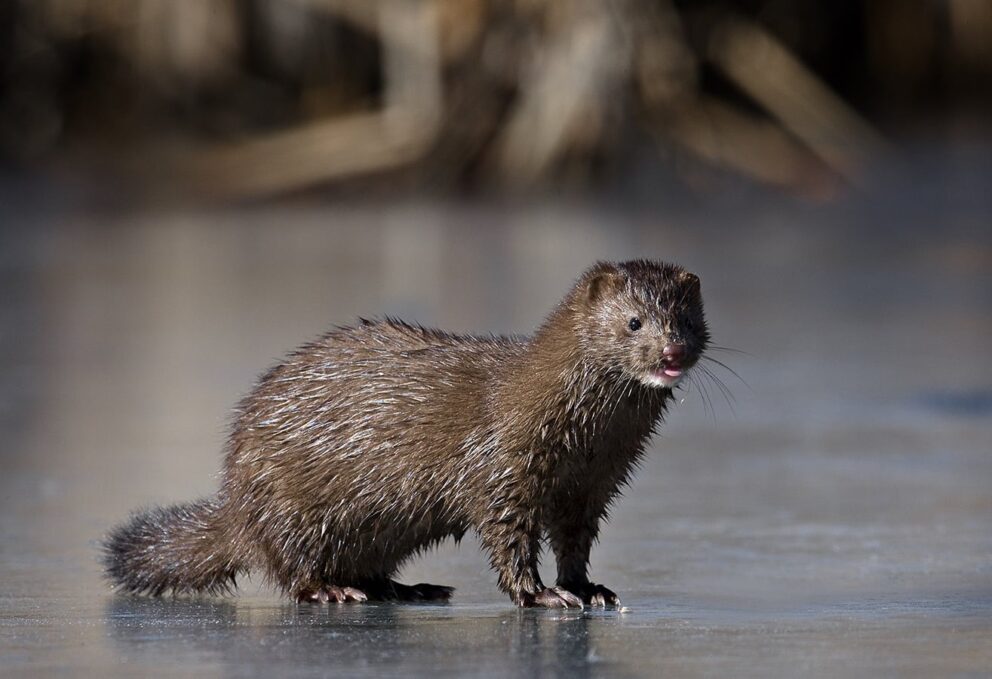- SCIENTIFIC NAME
- Neovison vison
- CLASSIFICATION
- Mammal
- LIFE SPAN
- 10-12 Years
- SIZE
- 12-18” | 1-3.5lbs
- STATE CONSERVATION STATUS
-
- State Protected
- FEDERAL CONSERVATION STATUS
- Least Concern
- GAME STATUS
- Furbearer
- GAME TYPE
- Furbearer
- Washoe
- Humboldt
- Pershing
- Churchill
- Mineral
- Lyon
- Douglas
- Carson City
- Storey
- Elko
- Lander
- Eureka
- White Pine
- Esmeralda
- Nye
- Lincoln
- Clark
Habitat & Range
Mink are predatory animals that live in aquatic environments such as lakeshores, marshes, and stream banks.
- Lakes and reservoirs
- Marsh
- Rivers and streams
Threats
- Habitat Degradation
Natural History
The American Mink is an aquatic carnivore specializing in both aquatic and terrestrial animals. They are capable of taking down prey larger than themselves and will feed on small rodents, rabbits, fish, crawfish, frogs, snakes, and birds. Mink need a permanent water source to thrive and will make their dens in the banks of rivers or in previously abandoned burrows. Mink give birth in late spring to roughly four to five young, called “kits,” but litter sizes of up to 17 have been recorded! At six to eight weeks the young begin learning to hunt with the adults. In the fall, Mink will leave their parents to go establish their own territories.
Fun Facts














